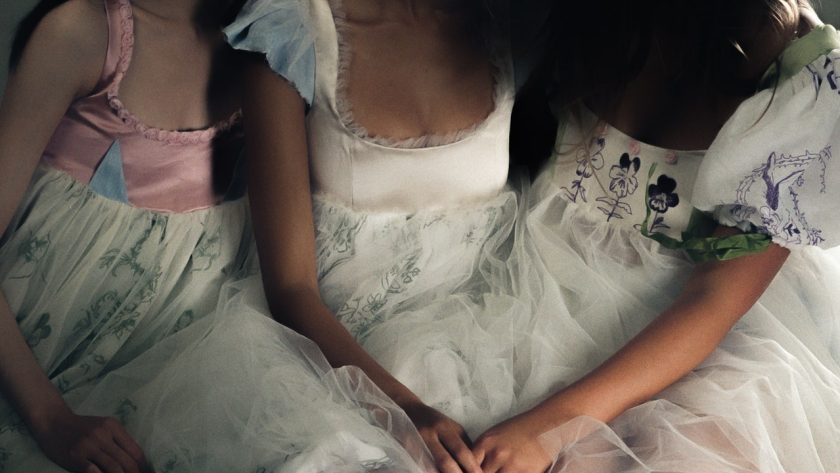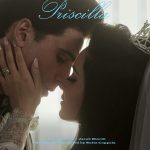There’s a once-upon-a-time aspect to Sophie Spratley’s designs for Rabbit that extends to the brand’s backstory. Around the time the English designer graduated from Kingston School of Art in 2021 she made contact through Instagram with a singer named Damsel, who asked to borrow some dresses for a photoshoot. “I lent them to her,” Spratley relates, “and then she said, ‘I’m going to Dover Street Market for this party, do you want to come with me?’ We both wore my dresses.” It was there that Rabbit was discovered and consequently picked up by DSM, a boon for any designer. “‘In Your Dreams’ (the name of the first Rabbit collection) literally became a reality,” says Spratley of the happenstance.
This is the stuff of fashion tales, and elements of fantasy carry over into Spratley’s work. Partial to an empire line and flowing ribbons, the designer creates all her own prints and narrative knits, which are full of symbolism. Her spring collection is called ‘Lovesick’ and the Bristol-based designer presented it London at the George Tavern, an independent music venue, with performances by comedian Mikey Bligh-Smith, and several musical acts including Clara Mann, Qazi & Qazi, Kipp Boucher, and The New Eves, on a catwalk that snaked in and out of the building. It was, Spratley wrote on Instagram, an “alternative punk folk girlies fashion show.”
In the lookbook, Abigail Morris, lead singer of the Last Dinner Party models the hero piece of the collection, a pink underbust corset made using a deadstock fabric donated to Rabbit by Lee Alexander McQueen’s talent supporting Sarabande Foundation.
Spratley is a woman designing for women, but her aesthetic is more fairycore than body revealing. Asked where Rabbit fits in the scheme of things, the designer said, “I think I’ve got my own little unique thing going on, but I definitely like Simone Rocha and Molly Goddard. The reason I started doing fashion was really seeing Molly Goddard’s work when I was 18 on Instagram…. I didn’t really have the confidence to think I could do this, but seeing her work and seeing the models she used—quite normal girls, quite unusual looking people—I just had this moment and I was like, ‘this is what I want to do with my life.’ ” This is a case of prettiness begetting more of the same. Rabbit’s small-batch, narrative pieces underline the story-telling aspect of fashion.



